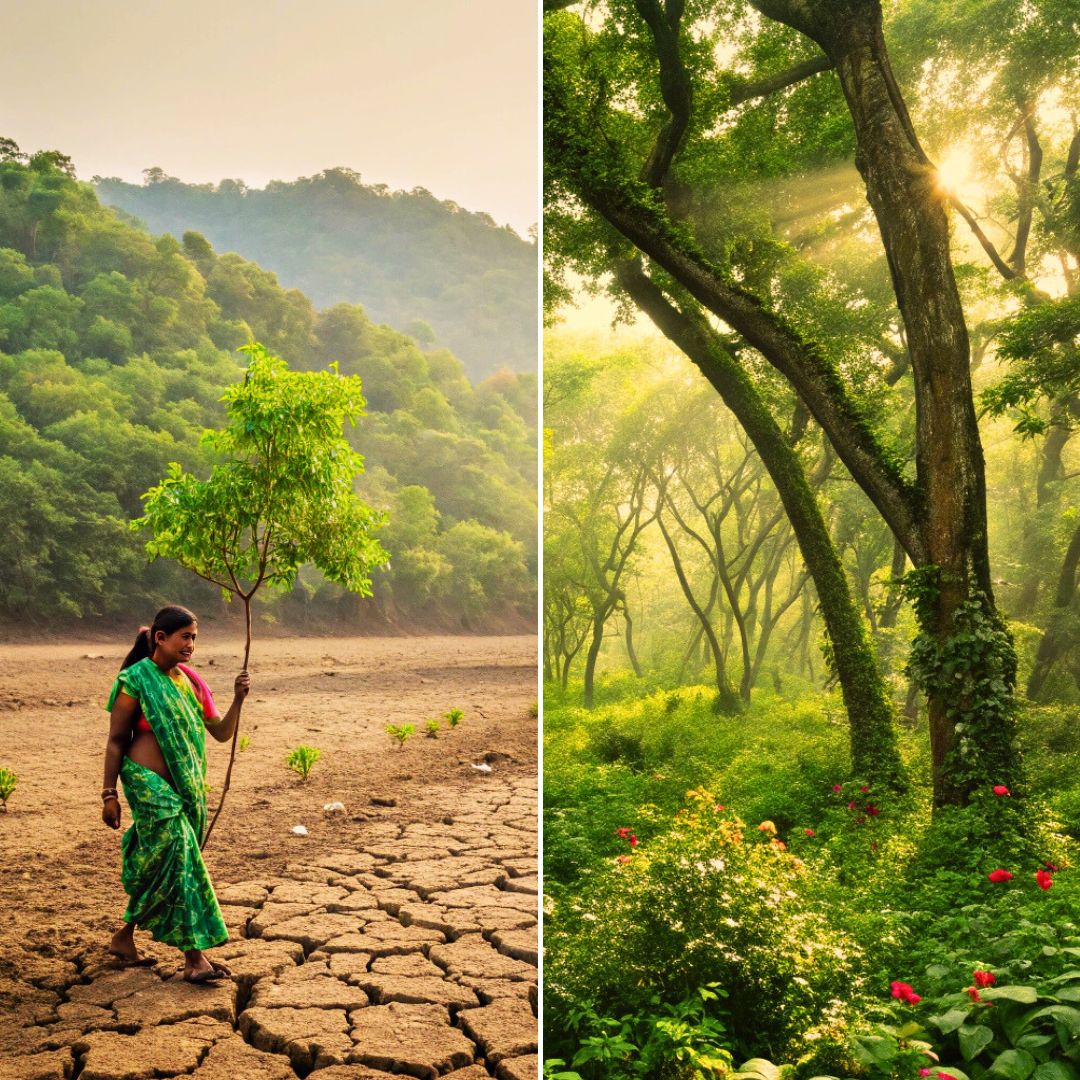India’s forests are losing their ability to absorb carbon dioxide, with photosynthetic efficiency declining by up to 12% in dense forest areas over the past two decades, according to new research from IIT Kharagpur and corroborated by studies from IIT Bombay and BITS Pilani.
Despite a reported increase in forest area, scientists warn that climate change-driven heat and drought are eroding forests’ capacity as carbon sinks, challenging India’s climate goals.
Officials highlight the need for urgent policy shifts as only 16% of Indian forests now exhibit high ecological integrity, raising concerns for both environmental sustainability and community livelihoods.
Climate Extremes Undermine Forest Carbon Sinks
The study, published in early July 2025 in the journal Nature Climate Change, is the first to map the decline in photosynthetic efficiency across India’s forests and directly link it to soil dryness and heat stress.
Researchers analysed satellite data from 2001 to 2024, focusing on regions like the Western and Eastern Ghats, the Northeast, and the western Himalayas areas traditionally considered India’s green lungs. According to Dr. Jayanarayan Kuttippurath (IIT Kharagpur), “The most alarming declines are seen in dense, supposedly resilient forests, where photosynthetic efficiency has dropped by as much as 12%.”
The study found that while the Leaf Area Index (a measure of greenness) has increased by 7% since 2001, this has not translated into greater carbon uptake, as water stress and rising temperatures disrupt the photosynthesis process.
Recent data from Global Forest Watch (2024) further show that India lost 18,200 hectares of primary forest last year alone, and over 2.3 million hectares since 2001, compounding the loss of carbon sequestration capacity.
Policy Gaps and Community Impact
While the Ministry of Environment, Forest and Climate Change’s latest India State of Forest Report (2023) celebrated a net increase in forest area, experts caution that much of this gain comes from plantations and degraded forests, not ecologically rich primary forests.
Only 16% of India’s forests now qualify as high-integrity ecosystems, according to a 2024 assessment by the Forest Survey of India.
Officials acknowledge the challenge: “We need to move beyond just increasing tree cover to restoring healthy, resilient forests that can withstand climate shocks,” said a senior ministry official, speaking to The Hindu.
On the ground, communities that depend on forests for their livelihoods are already feeling the impact. “We are seeing more dried streams and less wild produce,” said Meena Kumari, a forest dweller from Odisha.
Studies also show that half of India’s voluntary carbon market tree-planting projects have failed to deliver lasting benefits, often due to lack of community involvement and poor species selection.
The Road Ahead: Science, Policy, and People
The findings have far-reaching implications for India’s climate strategy, especially its pledge to create an additional carbon sink of 2.5–3 billion tonnes of CO2 equivalent by 2030 under the Paris Agreement.
Experts from IISER Bhopal and IIT Bombay stress the need for integrated approaches combining scientific monitoring, adaptive management, and local stewardship.
Recent initiatives, such as the 2025 National Forest Restoration Mission, aim to prioritise native species and water conservation, but experts warn that success will depend on sustained funding, transparent monitoring, and genuine community participation.
“Without addressing the root causes climate change, water scarcity, and land degradation India risks falling short of its climate targets,” said Dr. Rajiv Chaturvedi (BITS Pilani).
The Logical Indian’s Perspective
India’s forests are at a crossroads. The science is clear: expanding green cover alone is not enough to ensure climate resilience or ecological health.
We must reimagine forest management to focus on quality, not just quantity restoring degraded lands, protecting primary forests, and empowering local communities as true custodians of these vital ecosystems. As climate extremes intensify, how can we ensure our forests remain thriving carbon sinks and sources of life for generations to come?












